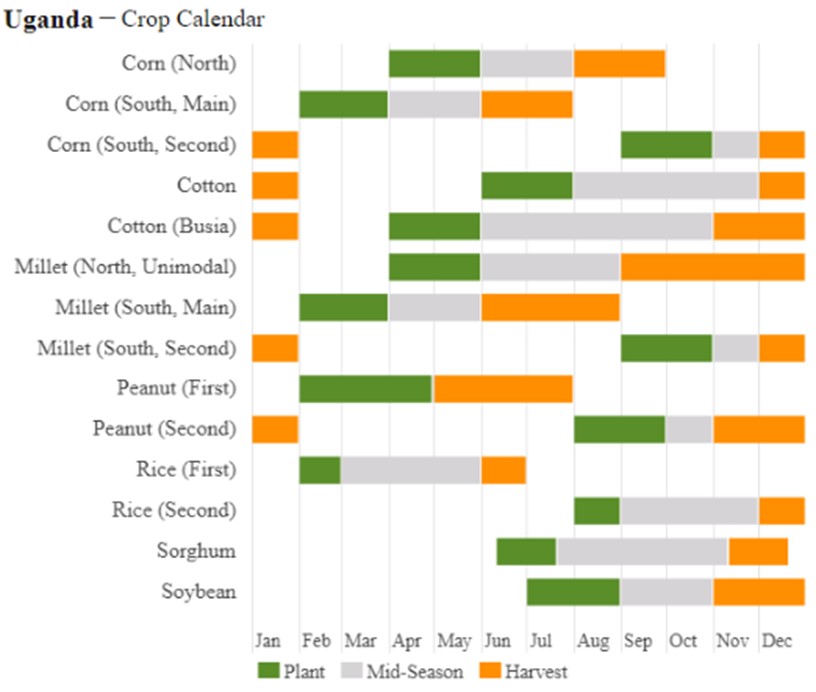
Investors consider Uganda’s agricultural potential to be among the best in Africa, with low temperature variability, fertile soils, and two rainy seasons over much of the country - leading to multiple crop harvests per year. According to the UN’s Food and Agriculture Organization, Uganda’s fertile agricultural land has the potential to feed 200 million people. Eighty percent of Uganda’s land is arable but only 35% is being cultivated. In FY 2022/23, agriculture accounted for about 24% of GDP, and 35% of export earnings. The UBOS estimates that about 68% of Uganda’s working population is employed in agriculture.
Uganda produces a wide range of agricultural products including coffee, tea, sugar, livestock, fish, edible oils, cotton, tobacco, plantains, corn, beans, cassava, sweet potatoes, millet, sorghum, and groundnuts. Commercialization of the sector is impeded by farmers’ limited use of fertilizer and quality seeds, and a lack of irrigation infrastructure – rendering production vulnerable to climatic extremes and pest infestations.
Sector growth is also impaired by the lack of quality packaging capabilities, insufficient storage facilities, poor post-harvest handling practices, shortage of agricultural credit, high freight costs, the lack of all-weather feeder roads in rural areas, a complicated and inefficient land tenure system, and limited knowledge of modern production practices. Ugandan producers often find it difficult to meet sanitary and phytosanitary standards required to export goods to Europe and the United States. Ugandan poultry, sugar, and milk products face export restrictions from Kenya
